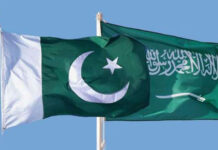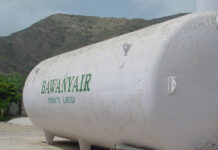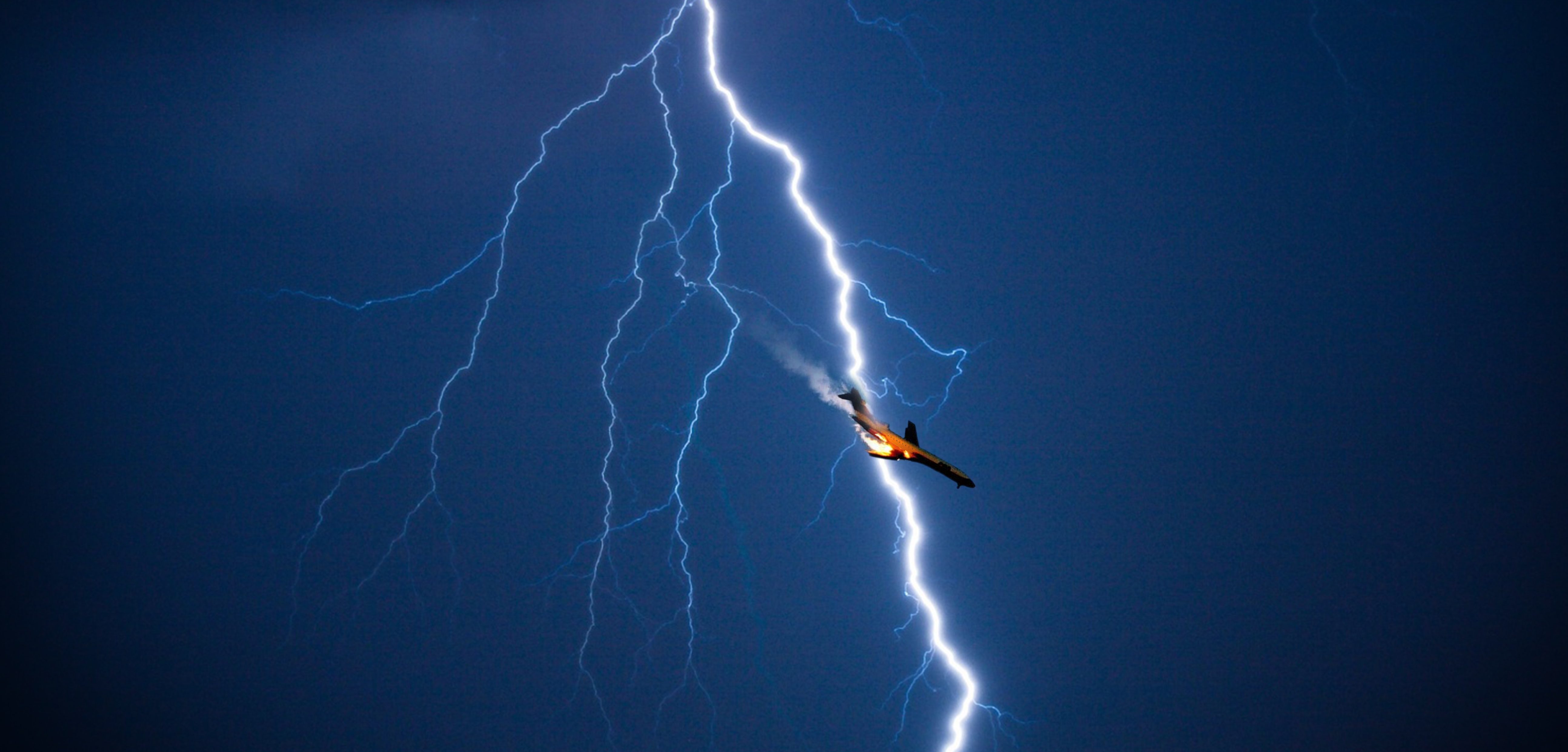An international forecast projects Pakistan’s domestic air travel to grow at twice the pace of global traffic over the next 20 years, enough to lure nearly half a dozen new airlines to apply for an operator’s license. But a deeper look into the market reveals that local carriers are bleeding money hands over fist, resulting in the largest private sector airline to freeze new investment and hold expansion plan
In 2016, International Air Transport Association (IATA), a trade body that represents 280 airlines or 83% of the world’s air traffic, projected intra-Pakistan air traffic would grow at almost 10% per annum over the next 20 years. If this projection turns out to be accurate, the local traffic will outpace the global annual growth rate projection by more than 100% during the same period.
Like every other positive news, the IATA’s forecast, which is subject to the country’s economic and demographic growth over the same period, made headlines, often linking it to the much-touted China Pakistan Economic Corridor that is likely to act as a catalyst for the growth of domestic air traffic.
Since the report was out, Serene Air and Air Sial have already launched their operations in the country while four new airlines are said to be in the process of acquiring a Regular Public Transport (RPT) license from Civil Aviation Authority to jump on the aviation bandwagon.

“This supports the prospects of growing revenues for airliners,” financial research and ratings firm JCR-VIS said in a 2016 report, citing IATA’s forecast. However, a deeper look into the market reveals the optimism about growth prospects of Pakistan’s aviation sector is in stark contrast with ground realities facing the industry. Far from growing business, the local airlines are losing money on account of an intense price war within the industry, regressive taxation policy and predatory pricing by Gulf carriers, the likes of Emirates, Etihad, and Qatar who have been allowed to expand operations into the country under National Aviation Policy (NAP) 2015.
“It looks good from an outsider’s perspective, but when you are in the business, you have to see if you can sustain,” said chairman Shaheen Airlines International (SAI), Kashif Sehbai talking to Profit.
“We have the highest tax rate in the world, 44% is what we pay in different taxes,” said the SAI chairman of the current taxation structure, which is crippling the industry. “Nobody is making money on the domestic sectors, everyone is in loss – Shaheen, PIA, Air Blue, Serene, everyone,” said he, adding the environment is not conducive for growth anymore.
The largest private airline in Pakistan, SAI is known for its bullish stance on the country’s aviation sector. The company had added in its fleet last year seven A319s, a member of Airbus A320 family mainly used in domestic operations. But, it has put a freeze on new investment and held its expansion plan for now. This 180 degree shift in its otherwise aggressive expansion policy doesn’t come without a reason: the airline has lost close to $100 million in two years at $4 million per month and was the worst hit carrier in fiscal year (FY) 2017, witnessing a 30% drop in its domestic passenger traffic compared to the preceding year.

SAI’s market share has now dropped to 23% from a high of 26% two years ago. However, it is not the only local carrier that is bleeding financially.
“In the last two months, our operations cost has gone up by 15%,” says Raheel Ahmed, Deputy Managing Director, Commercial, Air Blue. Their revenue, he says is the same as it was five years ago. Air Blue saw its passenger traffic drop 18% in FY17 over the previous year, according to CAA data.
Are these new airlines jumping in a ditch, we ask Ahmed. “Absolutely! All of us are losing money.”
Explaining, Ahmed said in the last four months dollar went up 10%, fuel prices also increased, which raised the cost because they have to pay dollars to leasing companies, fuel suppliers and aviation regulators (in case of international flights) under different charges. Jet fuel price has more than doubled to $80 per barrel, up from $40 a barrel on January 2016, but the industry was not able to pass on this significant increase to the consumers because of an intense competition in the domestic sector.
The aviation sector is a volumes business and runs on low margins – about 5% internationally and less than 3% in Pakistan. But high taxes result in higher fares, making air travel more expensive, which in turn hampers the sector’s growth. This was also evident in the last years’ aviation data.
Pakistan’s domestic air traffic increased by 3% in fiscal year ending June 30, 2017, according to statistics published by CAA, a distant south from IATA’s projection, which estimated intra– Pakistan air traffic to grow at 9.9% per year over several years.
“We are overtaxed,” says Nehal Akbar, Regional Director South, Serene Air adding high tax rate and a price war were hurting the industry. Though he acknowledged Serene was barely breaking even, he disagreed that the market wasn’t growing. “It’s not that we are not getting business; business is there and the industry will grow at 10 to 11% every year, but our margins have squeezed.”
Because of a high-tax-low-volumes scenario, local carriers are unable to pass on any increase in operational costs to the consumers. And operating below full occupancy, local carriers have engaged in a price war to get any extra passenger they can. For example, almost all the domestic operators charge between Rs10,000 and Rs11,000 (this can go up as occupancy rate increases) on a one-way ticket from Karachi to Lahore, but Serene increased that price earlier this year after two of Air Blue’s planes were grounded for maintenance.
The first recommendation in National Aviation Policy 2015 was to reduce taxes, but the government increased it threefold, Sehbai said. “Seems like intentional strangling of the industry.”
In 2015, the government changed the tax policy by moving away from percentage of ticket price to a flat rate. That is passengers have to pay a flat tax of Rs2,500 (Rs3,500 when other CAA charges are added) on one-way ticket compared to 16% of the ticket price under the previous policy.
The change in policy discourages people from air travel and makes it difficult for local airlines to compete with international carriers accused of using predatory pricing or dumping seats in Pakistan on very low fares.
Air Blue pulled out of Dubai a year-and-a-half ago because it could not compete with Emirates, which operates six daily flights on that route. Shaheen Air also suspended its Manchester flight, which was operating on full capacity, after Pakistan International Airlines (PIA) in 2016 reduced its fare beyond a sustainable level – the state-owned aviation giant is costing Rs40 billion to the exchequer in annual losses but continues to be bailed out by the government.

The local carriers are now more focussed on domestic market since their international operations have been reduced significantly over the last couple of years.
“In 2015, domestic airlines had 60% share of international traffic, now we have 38% of that market, a decline of 22%,” Sehbai, the SAI Chairman, says. “We call it rapid descent.”
In National Aviation Policy of 2015, the incumbent opened Pakistan’s skies – thus the name Open Sky Policy – to international carriers in an attempt to liberalise the country’s aviation sector.
“The policy must ensure a competitive playing field for all national airlines, an open sky that increases travel and market access, and a fair and just system for all stakeholders,” reads the policy document adding, “The transition to more liberal Air Services Agreements shall accord greater business freedom, higher levels of customer satisfaction and greater micro and macro-economic growth of the aviation domain.” It further says, “Pakistan shall pursue bilateral open skies policy towards other countries based on the principle of reciprocity.”

However, local carriers believe that the Open Sky Policy wasn’t implemented using a level-playing field.
In theory open sky is not a bad policy, Sehbai says but the government should also take into account that Shaheen can’t compete with Emirates. “No airline in Pakistan can compete with the Gulf carriers because the latter are state-run and have better tax policies. This part was neglected in our aviation policy when it was implemented.”
Raheel Ahmed of Air Blue echoes similar views.
Giving an example of Karachi-Dubai-Karachi route, Ahmed said their return fare is Rs18,000, which includes Rs11,000 tax. So it comes down to a margin of Rs7,000 for a two-way ticket or Rs3,500 on a one-way fare. “But they are backed by their governments, we can’t compete on this margin.”
Giving another example, Ahmed said, “Pick any two-hour [flight] segment in India. The aircrafts are the same, the amount of fuel burned is the same, but their tax is Rs1,500 while ours is Rs3,500.”
Ahmed’s point is further elaborated by Kiran Stacey in her recent opinion piece for Financial Times.

“Indians have better access to air travel in part because they are richer, but also because, for them, air travel is much cheaper,” writes Stacey, who recently experienced domestic travel in both India and Pakistan. “A highly competitive domestic aviation market means that a passenger looking to fly from Delhi to Mumbai on July 1 this year, for example, can pay as little as $35. In Pakistan, someone wanting to do the roughly equivalent trip from Islamabad to Karachi will probably have to fly with the government-controlled Pakistan International Airlines and pay at least $100 to do so.”
Because of lower taxes, Indian airlines are better positioned to compete with Gulf carriers compared to their Pakistani counterparts.
The Gulf carriers, like Emirates, Etihad, and Qatar Airways are accused of predatory pricing even in the United States where major airlines have taken up this matter with their regulator. According to the competition, Gulf carriers receive subsidy from their respective governments, which sees aviation sector as an opportunity for increasing tourism to the Gulf states – an allegation, the latter denies.
After denting their share on the international front, the UAE-based airlines have started expanding their footprint in Pakistan’s domestic market by offering more direct flights to tier two cities, which is diverting business away from Pakistani carriers.
The government put a noose around our neck by giving them [Gulf carriers] permission to eat our market, Sehbai says. “Our skies were sold [for a song], but what good did it bring for Pakistan?”

Others are of the view that the policy was not implemented on the basis of the reciprocity as promised. For example, Dubai-based Gerry’s Dnata was given airport handling services, but that wasn’t reciprocated in Dubai by giving the same rights to, say its Pakistani counterpart Shaheen Air Services, says Akbar of Serene Air. “It is not a fair policy,” said he. “The government should provide some support, maybe lower taxes before expecting us to compete. If they lower taxes, air travel will increase and more people will benefit through job creation,” he added.
The local industry is apprehensive because first Gulf carriers were allowed to go to Peshawar, Faisalabad, Sialkot and Multan and now they fear they will be allowed to operate direct flights to even Sukkur and Nawab Shah.
All this money is going out of the country, Akbar said referring to a report that says foreign airlines have remitted $1.5 billion in two years (FY2016 and FY2017).
But more competition is healthy for the market and brings more choices to passengers, and, needless to say, keeps prices under check. Are local carriers afraid of competition then?
“I have got zero concern about competition,” said Sehbai in a matter of fact tone. “I want to turn Shaheen into Pakistan’s Emirates and revive the past glory of our aviation sector. But that’s not possible without a fair operating environment.”
If the government wants to improve Pakistan’s aviation sector, it has to provide level-playing field, the SAI Chairman says. “For the industry to grow, we need tax reform. We need a national aviation vision. People who understand commercial aviation need to run CAA and make policy.”

Our queries to CAA were not responded till the filing of this report. However, CAA is said to be revising the aviation policy, which is likely to be out in the middle of 2018.
“I am not hoping for much improvement,” says a visibly upset Sehbai – and he certainly has reasons for that.
The fastest growing local carrier, which increased its revenues by more than 300% in the last five years, SAI made huge investment by adding seven A319s to its fleet in 2017 as part of an aggressive country-wide expansion plan – only to hold back later because of what it considers a “hostile business environment”.
“We are just abiding by minimum flight schedule requirements and not expanding, why do I invest, what am I getting in return. The yields have not gone up,” Sehbai says. “If I don’t have regulatory requirements to uphold, I will not run a single flight domestically. I will not add one new flight to the existing operations in the prevailing conditions.”
The SAI Chairman says Pakistan’s local aviation sector will not grow under current policies. “Theoretically, there is room for more airlines in Pakistan. There are 200 million plus people, but only 70 planes are catering to them; the potential is very big.”
Sehbai believes financially, it is not a viable to operate an airline under the current policy. And what about those new airlines, we ask him.
“Mark my words. In this environment and with the current policies, they would fail.”























Cut tax rate in half. Revenues will grow, investments in capacity will be made. Passenger numbers and profits will more than double, and Pakistan will then get more tax revenue at a 22% tax rate! Lower taxes can increase revenues in this manner.
Bonjour Cendrine et merci. Je trouve que ton bracelet est très beau
. Bisous.
Comments are closed.